When and How to Prune Lavender for Lush, Showy Plants
Highly popular for their gorgeous flowers and exquisite herbal perfume, the best way to keep lavender plants at their peak is to become skilled at pruning.


We link to vendors to help you find relevant products. If you buy from one of our links, we may earn a commission.
These tough, woody perennials are mostly self-sufficient and handle lean soils, hot sun, and arid conditions without missing a beat.
Pollinators flock to their sweet mauve, pink, purple, and white flowers, while the intense essential oils repel deer and gnawing rodents.
The pretty plants make a beautiful addition to barriers, beds, borders, containers, foundations, and rockeries.
And freshly cut flowers add scented beauty to floral arrangements while dried flowers add long-lasting fragrance to potpourri and floral sachets.
If you need cold-hardy plants for tough winters, there are many suitable selections. Or if you need a lavender cultivar for high heat and humidity, there are plenty of those too.
About the only thing they don’t do on their own is keep leggy stem growth in check.
That’s where you and your garden snips come in…
With just a little annual trimming, you can keep lavender compact, dense, and floriferous for many years.
What’s that? Your plants are already overgrown and leggy? Not to worry, we have the details on how to give them a second life with a rejuvenating hard prune as well.
So sharpen up your shears and read on to learn how to prune lavender for lush, showy plants!
Here’s what’s ahead:
What You’ll Learn
Is Pruning Necessary?
Pruning is an important step in the maintenance of woody subshrubs like lavender.
Not only does it tidy plants for a compact, uniform profile, but it also slows the growth of bare lower stems and forces plants to branch out, developing more flowers.
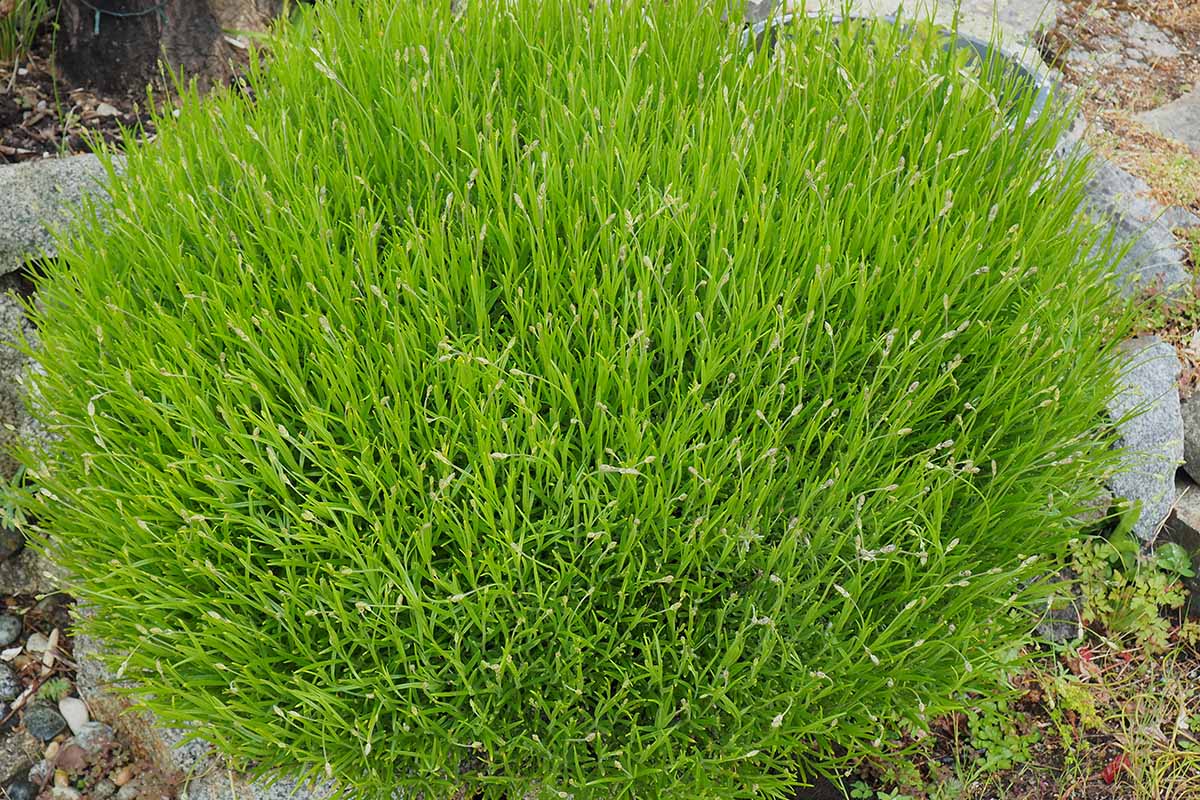

Branching produces a thick canopy and causes some new growth at the base of stems as well – which is where plants tend to get leggy.
Without pruning, in a few seasons your once-showy lavender may take on the unsightly chicken-legs look, with long, scrawny stems below tufts of foliage and sparse flowers.
Pruning also helps to extend the life of lavender, which can be about five to seven years for the tender or semi-hardy types such as the French (L. dentata) and Spanish (L. stoechas) species.
The hardy English (L. angustifolia) types and lavandin (L. x. intermedia) hybrids are much longer-lived and can last 15 to 20 years with proper pruning.
But even with an annual trim, lavender can become leggy or overgrown over time, flopping and sprawling with a bare, woody center. That’s when a hard prune is needed to rejuvenate plants – more on that in a bit, but let’s look at the timing first.
When to Prune
When to prune lavender (and other shrubby herbs) depends a good deal on your winter weather.
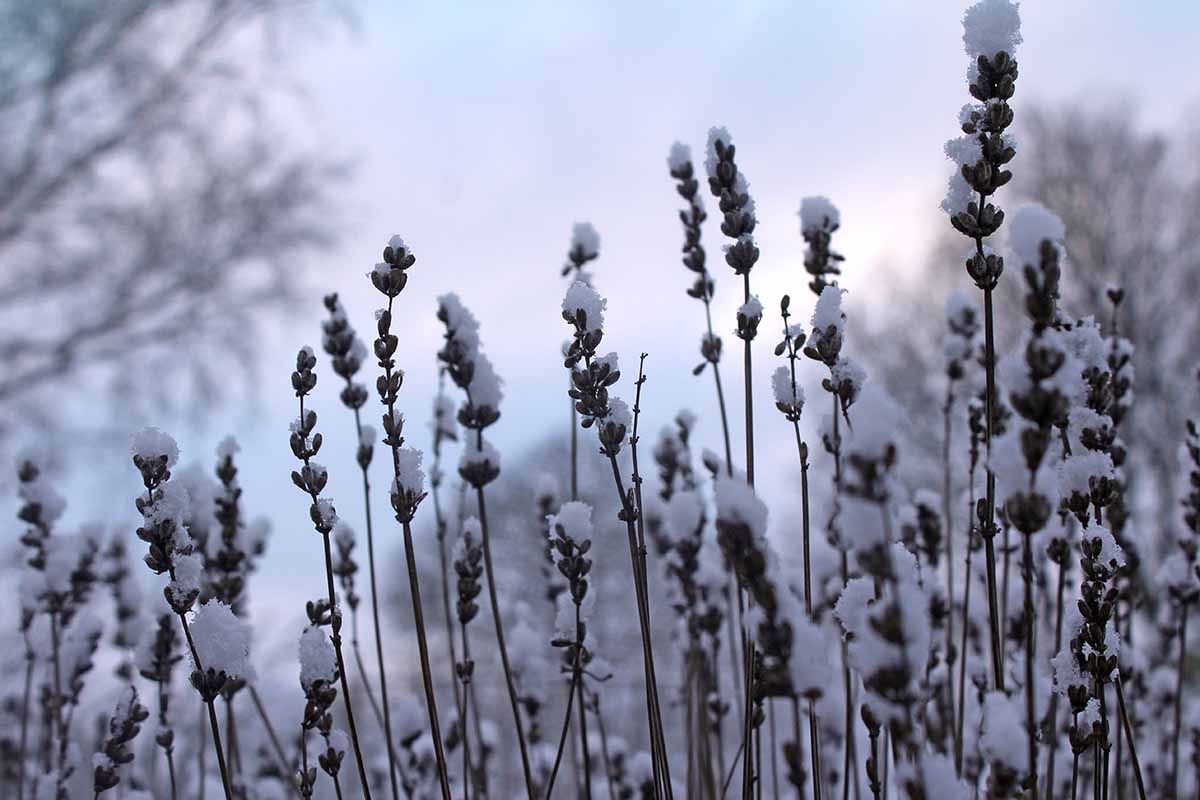

For those in areas with mild winters, with temperatures that typically stay above freezing, trimming can be done immediately after flowering or any time until autumn.
But in regions with freezing winter temperatures, you should avoid trimming plants beyond midsummer.
Why? As mentioned, pruning forces new growth. And if forced late in the season, tender growth can easily be injured by an early frost.
These injuries, along with any recently cut stems, open plants up to further cold damage, which can destroy stems or even kill an entire plant.
To protect plants, allow stems enough time to heal over and new growth to harden for several weeks before cold weather arrives.
This means the optimal time to trim in most regions is right after flowering.
However, in areas with short summers and very early frosts, the annual trim is often best performed in late winter or early spring, just as new growth emerges but well before buds start to set.
To keep things simple in these areas, trim your lavender at the same time that you do your winter cleanup, which is outlined below.
An Annual Trim
With the exception of those short summer/early frost areas, the best time to prune lavender is after flowering.
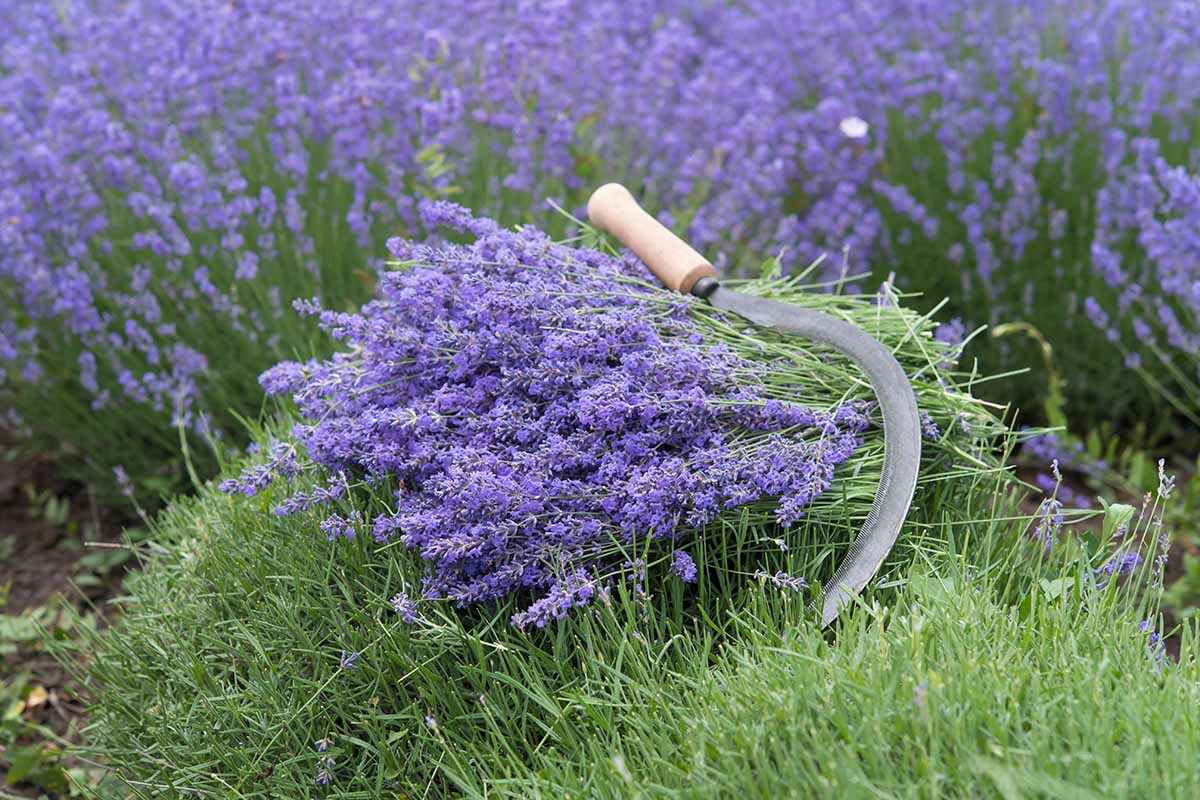

The tender and semi-hardy varieties, such as the French (L. dentata) and Spanish (L. stoechas) types, require little more than deadheading.
Simply gather a handful of flower stems together. Using clean, sharp garden shears, snip below the stems, removing an inch or two of foliage and creating a pleasing shape at the same time.
For larger plantings, use pruning shears to lightly remove flower stems and foliage tips.
Continue to deadhead reblooming flowers over the summer.
If plants become a bit scruffy, shape lightly at the end of August, creating a mounded form.
Hardy types, like the English species (L. angustifolia) and the lavandin hybrids (L. x intermedia), benefit from a more aggressive approach.
Gather a handful of stems and cut as described above, but remove up to one-third of the overall growth on English lavenders and up to one-half the growth of lavandins, ensuring plenty of green foliage is left intact.
Sculpt the plants as you snip, forming a mounded, mushroom-cap shape.
To avoid flower loss, don’t cut into old wood and take care not to damage any new, green shoots.
For the short summer/early frost areas, limit after-flower care to deadheading only. In these areas, give plants their annual trim in late winter to early spring.
Rejuvenating Overgrown, Leggy Lavender
To rejuvenate lavender that has become overgrown and leggy, a hard prune is required – which is also best done immediately after flowering.
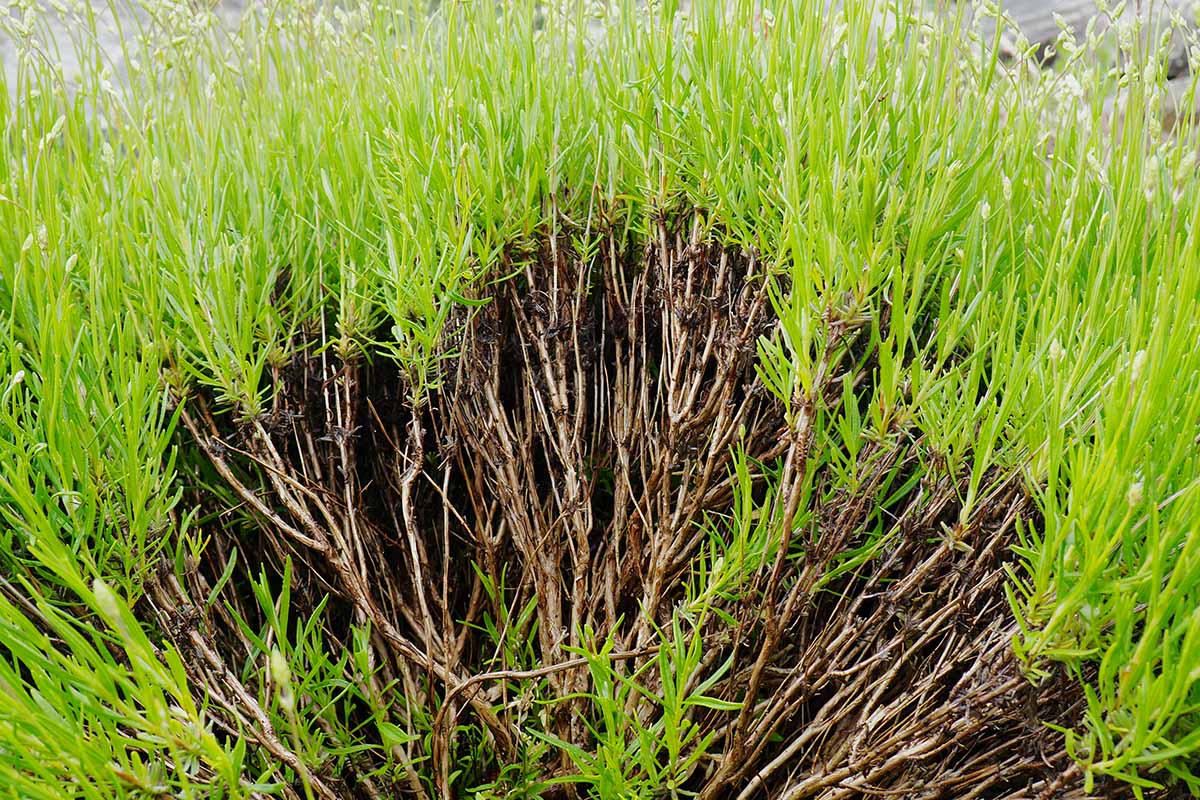

You might be familiar with the gardening rule of thumb that you should never cut back woody herbs below the lowest foliage. This is because bare stems won’t produce new growth on bare wood and cutting below the foliage leaves you with a bare stick.
However, to give lavender a hard prune, all stems are cut back into bare wood.
To start, use clean, sharp garden snips to cut back stems with only top growth, cutting close to the crown or base – this is typically the older, outer ring of stems.
A close look at the inner stems reveals small leaves emerging from the base of at least some of them. Cut these stems back to just above the new foliage.
Remove any remaining top-growth-only stems at the base.
Now, fair warning here. A hard prune is drastic, and what you’re left with is a small, lopped, and woody base with wee bits of foliage.
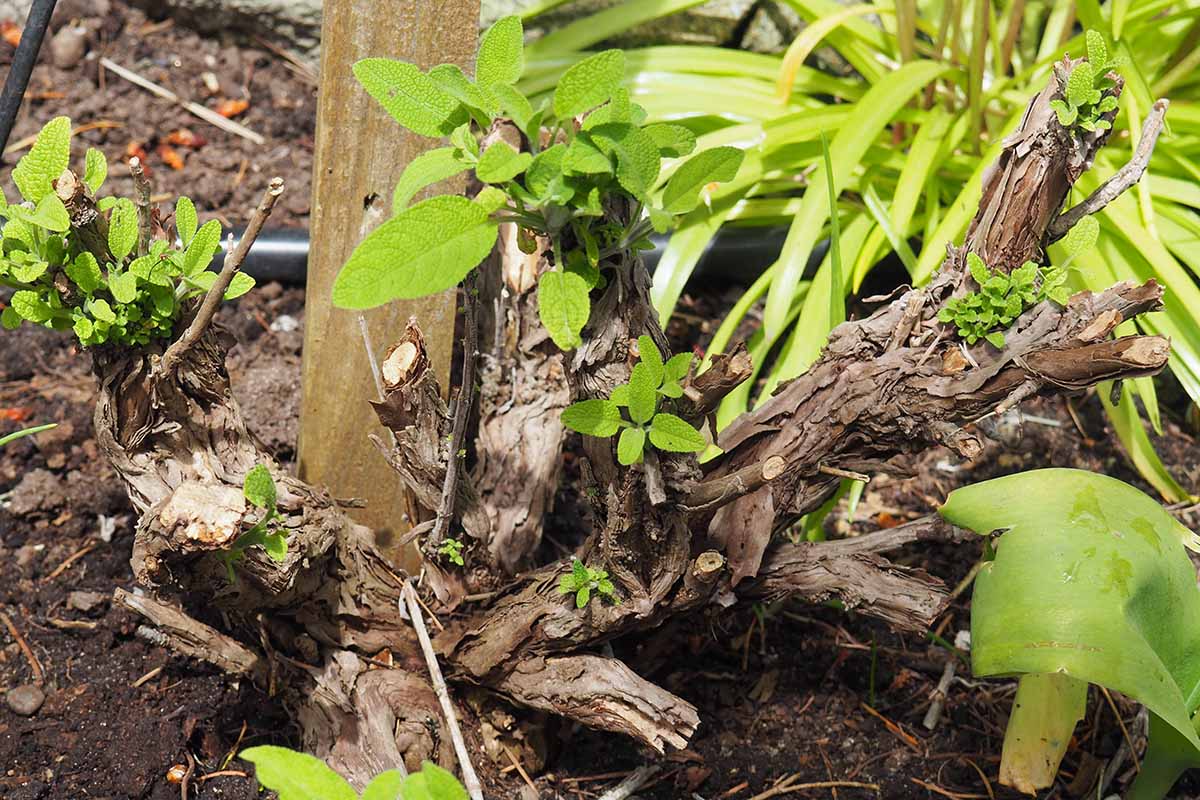

And because the plant’s size is greatly reduced, flower loss the following year is significant.
But, in the second year, flower count improves dramatically as plants regrow steadily. And by the third year, they’re once again full and lush with plentiful flowers.
Also, the hardy types, L. angustifolia and L. x intermedia, respond best to a hard prune.
You can try it on the tender varieties as well, but chances of success are only about 50-50.
A better strategy – due to their shorter lifespan – is to propagate cuttings. Then, as mature plants start to falter, you have a supply of rooted cuttings ready to replace them with.
Hardy or tender, it’s always a good idea to start a few new plants with the pruned material. Our guide on how to propagate lavender from cuttings outlines the easy steps.
Winter Cleanup
Because winter’s harsh weather can leave plants looking ragged or damaged, lavender also benefits from a cosmetic, late winter to early spring cleanup.
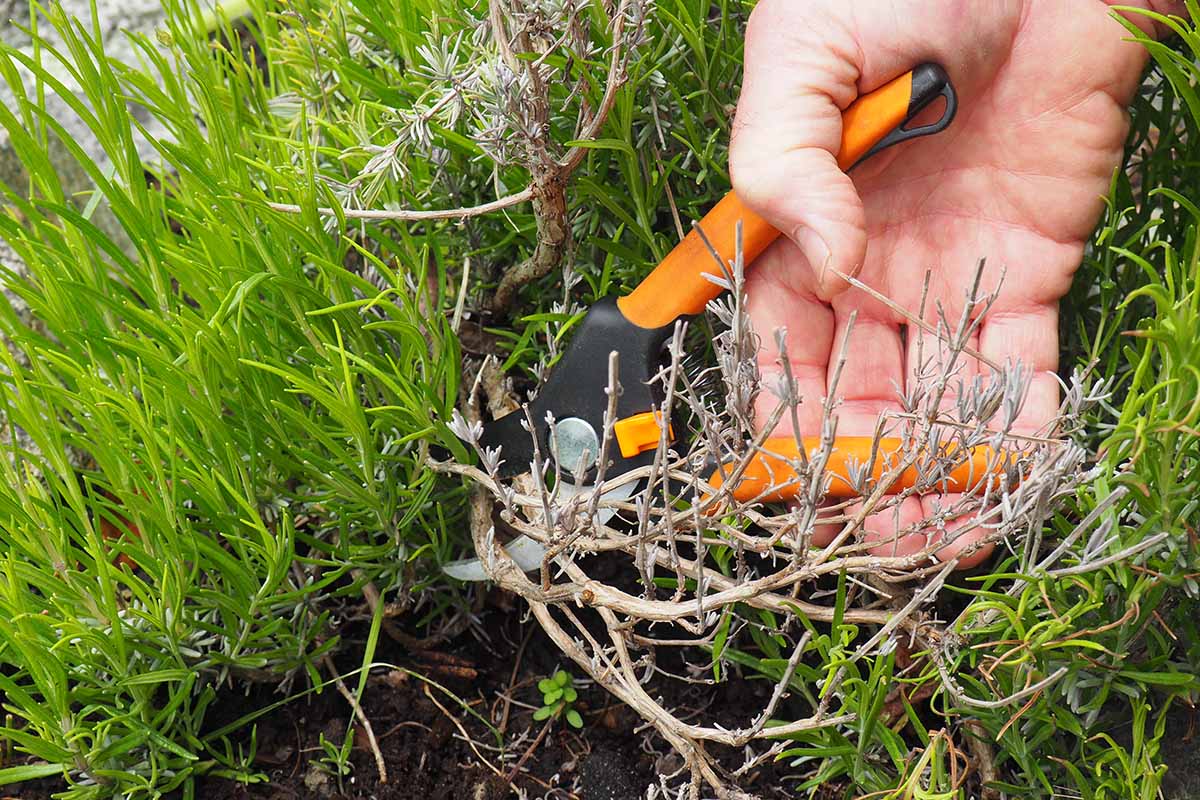

Wait until new growth has just emerged, then remove any stems that are damaged, dead, or stunted.
Use clean, sharp garden shears to cleanly cut stems close to the base.
Sometimes it can be hard to tell if a branch is dead or not. To test, bend the tip a few inches from the end.
If it’s brittle, snaps easily, and shows a beige, brown, or tan interior, it’s a goner. But if the tip bends or has some pliability, it may still be alive.
Cut off the tip a few inches down the stem, or very lightly scrape a small section of the outer bark away around mid-stem.
If you can see green wood, life is present! Trim by one-third and then wait four to six weeks – if no new growth emerges after six weeks, lop it off at the base.
And remember – if you live in regions with short summers and early frosts, this is the best time to give your plants their annual trim.
The Final Cut
It doesn’t take much to keep lavender plants attractive and floriferous.
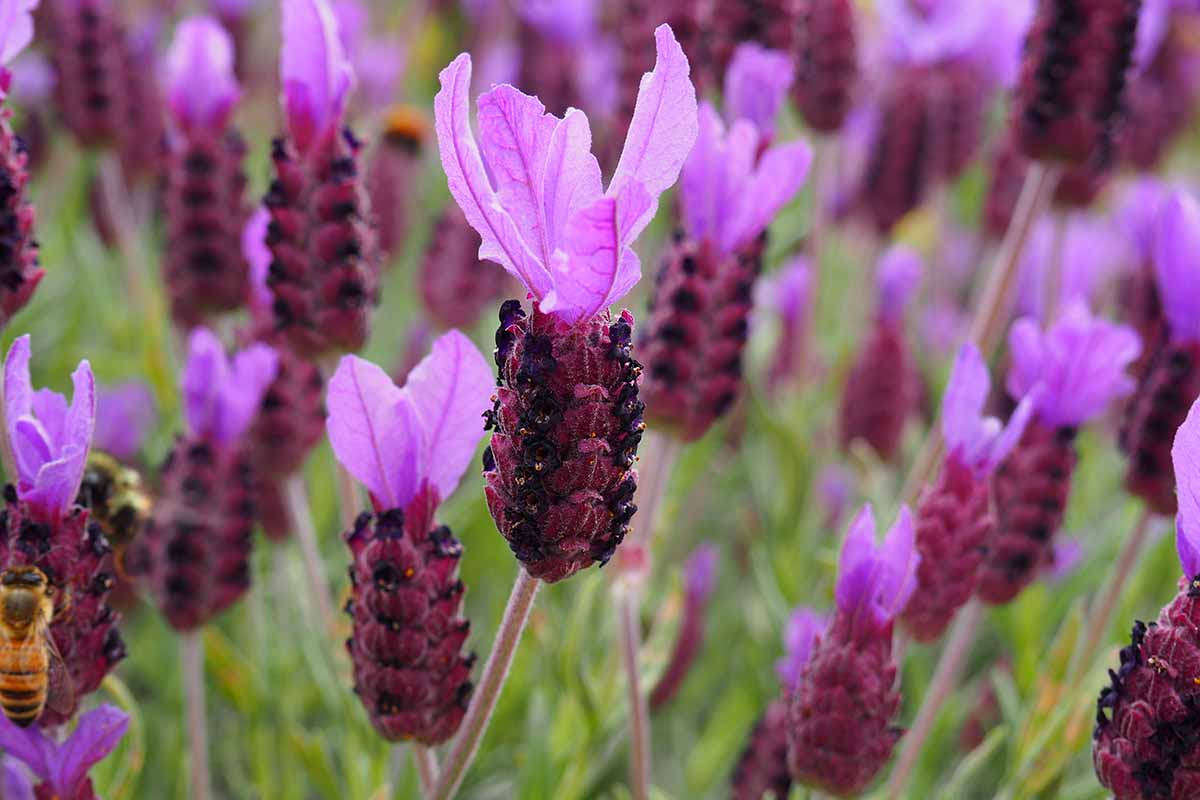

An annual trim shapes and tidies plants and produces multiple branches with plenty of flowers. And the occasional hard prune can rejuvenate even mature, sprawling specimens.
But to ensure your lavender can survive cold winters, do your cutting immediately after flowering and no later than midsummer.
And when you’re finished pruning, use some of the trimmed material as stem cuttings to start new plants – because you can never have too much lavender!
Do you folks have questions about pruning lavender? Let us know in the comments section below.
And for more info on the wonderful world of shrubby herbs, add these guides to your reading list next:
